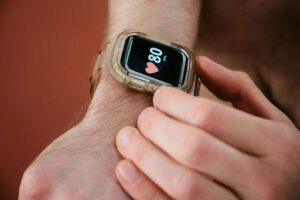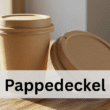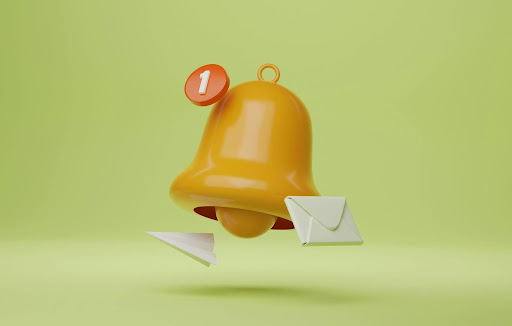The digital world is buzzing, literally. With every ping, buzz, banner, and badge, our attention is fractured. Many of us begin our day by silencing a barrage of overnight alerts and end it scrolling through a sea of updates we never asked for. It’s no wonder people are turning to smart tools, wellness gadgets, and even niche tech solutions to regain control.
This growing mindfulness around sound, interruptions, and mental clarity is why tools like lexie hearing aid alternative are getting attention, not just among the hard-of-hearing, but among anyone seeking less invasive, more adaptable ways to manage audio and sensory input. Our relationship with technology is shifting from constant accessibility to conscious interaction.
If you’re one of the many looking to reclaim your focus and reduce digital exhaustion, here are some powerful yet simple tech tools and habits that can help.
The Physiology of Digital Distraction
Before diving into solutions, it’s worth understanding the toll digital notifications take. According to the National Institutes of Health (NIH), constant distractions impact cognitive performance, increasing stress and lowering our ability to filter information efficiently. Multitasking doesn’t make us more productive, it makes us tired and more error-prone.
In essence, every notification demands a slice of our mental energy. Over time, these micro-interruptions can compound into chronic fatigue, poor sleep, and anxiety.
Focus Modes & Smart Notification Filters
Start with what you already own. Both iOS and Android now feature Focus modes that allow you to customize who and what can reach you during different times of day.
- Apple Focus lets users create profiles for work, sleep, driving, or custom activities.
- Android’s Do Not Disturb & Digital Wellbeing offers app-based silencing and time-of-day automation.
Bonus tip: Use widgets or lock screen summaries instead of real-time banners. This gives you control over when you engage with notifications, rather than letting them control you.
Email Decluttering Tools
Email inboxes are one of the most persistent sources of stress, and distractions. But tools like:
- Unroll.Me – Consolidates email subscriptions into a daily digest
- Sanebox – Uses AI to sort important from unimportant emails
- Clean Email – Quickly unsubscribes you from newsletters and marketing
…can help reduce the digital noise by 50% or more in a single week. Many remote workers pair these with email batching, checking email just two or three times per day to avoid a fragmented workflow.
Sound-Aware Wellness Devices
Sound isn’t always visualized as a distraction, but it plays a major role in overstimulation. That’s why wellness tech focused on auditory environments is thriving.
Noise-canceling headphones are now practically essential for commuters and home workers alike. But beyond the usual suspects like Bose or Sony, there’s an emerging category of discrete, focused auditory tools like open-ear earbuds and bone-conduction headphones that allow situational awareness without sacrificing peace.
It’s similar to how alternatives to mainstream devices are gaining ground, consider how consumers are now exploring the lexie hearing aid alternative, which emphasizes both affordability and minimal invasiveness. Whether for mild hearing needs or sound filtering, people are rethinking the relationship between their ears and their devices.
Ambient Sound Machines and Apps
For those who find silence unsettling, ambient noise can be a calming compromise. Try:
- Noisli – Lets you blend rain, wind, café sounds, and more
- Endel – Creates personalized soundscapes based on time of day, movement, and heart rate
- myNoise – Great for masking intrusive background sounds like traffic or hallway chatter
Many of these apps are being used not just for sleep or meditation, but for boosting productivity during deep work sessions.
Timeboxing Apps
Timeboxing is a productivity method where you divide your workday into blocks, each dedicated to a specific task, with breaks built in.
Apps like:
- Sunsama
- Motion
- Focus Booster (Pomodoro style)
…help train your brain to ignore distractions during focus periods. The key is pairing timeboxing with silenced alerts, let your phone or desktop know when you are available, not the other way around.
Mindful Smartwatches

Smartwatches are double-edged swords. They can serve as wrist-bound dopamine dispensers, or as mindfulness tools.
Turn off non-essential alerts. Use features like:
- Breathwork reminders
- Stand/stretch notifications
- Silent timers
This reframes the watch as a wellness assistant rather than a miniature smartphone. For example, Apple Watch’s “Wind Down” feature or Garmin’s stress tracking can cue real-time behavior adjustments without a single beep or buzz.
Digital Boundaries for the Home
Open-plan living has made it harder to find auditory or visual privacy. Simple tech upgrades can help:
- Smart LED status lights – Signal to housemates when you’re on a call
- Noise-absorbing panels – Blend into home décor while softening echo
- Router-level content scheduling – Restrict app or site access during family dinner or screen-free hours
These tools, though analog-adjacent, reduce the need for verbal interruptions, and make the home a bit more harmonious.
Chrome Extensions for Browser Bliss
Too many tabs? Try:
- OneTab – Consolidates all open tabs into a list
- StayFocusd – Blocks distracting sites for set time periods
- Toggl Track – Monitors where your digital time actually goes
Paired with keyboard shortcuts and pinned tabs, these tools declutter your digital workspace and encourage single-tasking, one of the biggest antidotes to notification overload.
Make Silence Intentional
Reducing digital noise isn’t about escaping tech, it’s about making tech work for you. A key part of that is understanding the physiological and psychological impact of always-on living. When people start researching solutions like the lexie hearing aid alternative, they’re not just looking for a hearing boost, they’re making a decision to hear better. To focus better. To feel better.
You don’t need to ditch your phone or live off the grid. But reclaiming your day from constant interruption? That’s a resolution worth sticking to in 2025.




